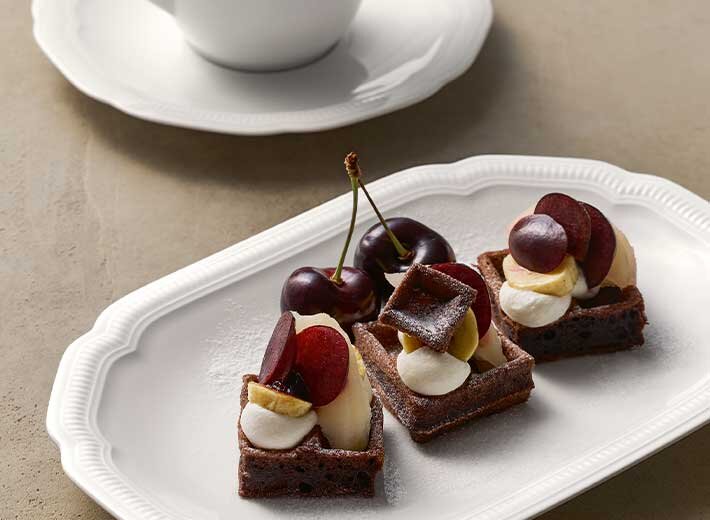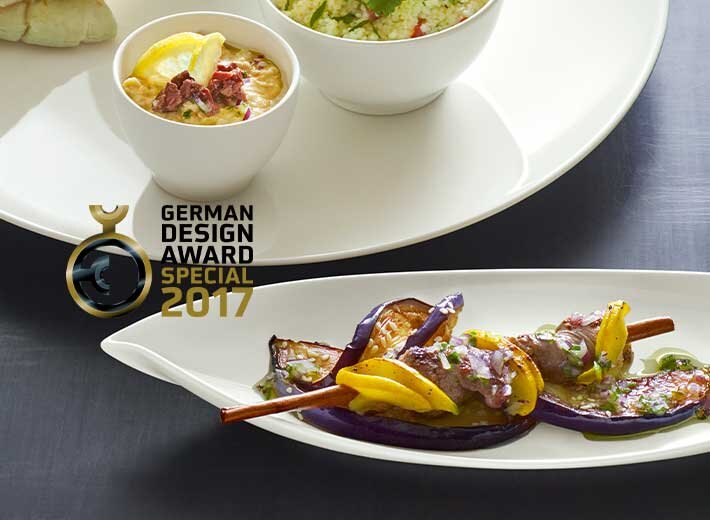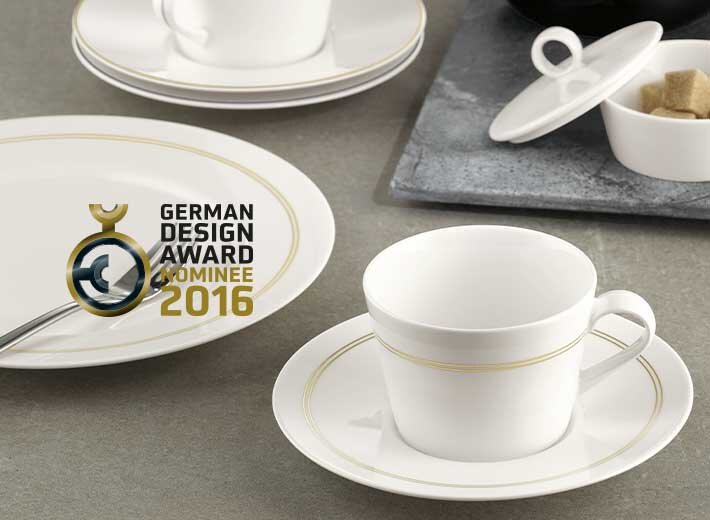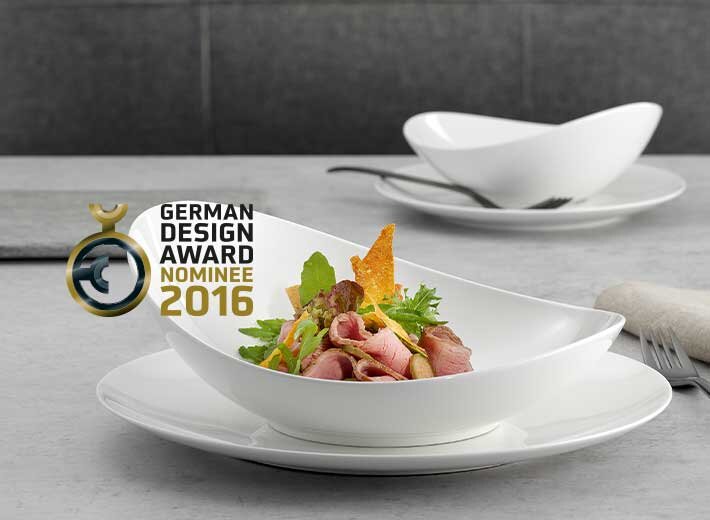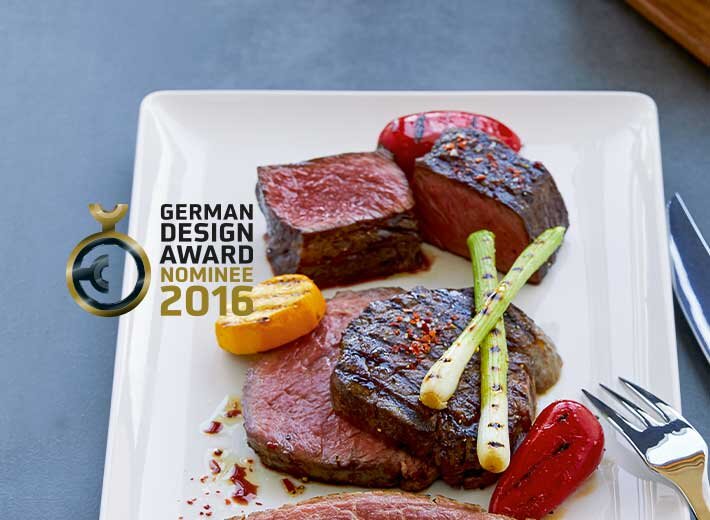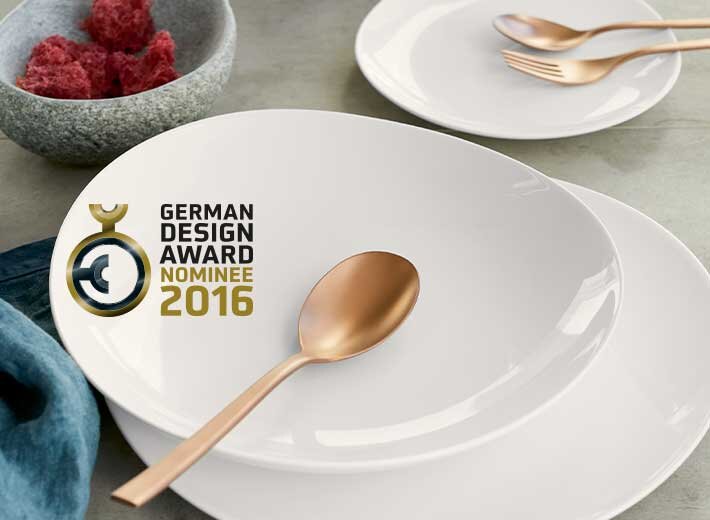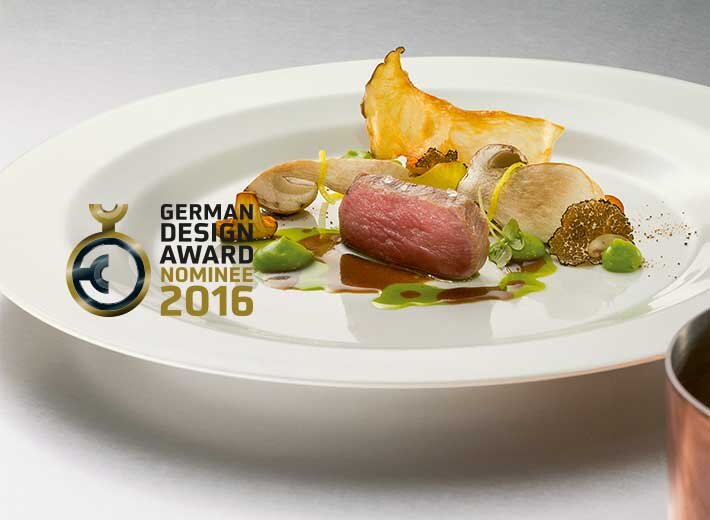Porcelain tableware
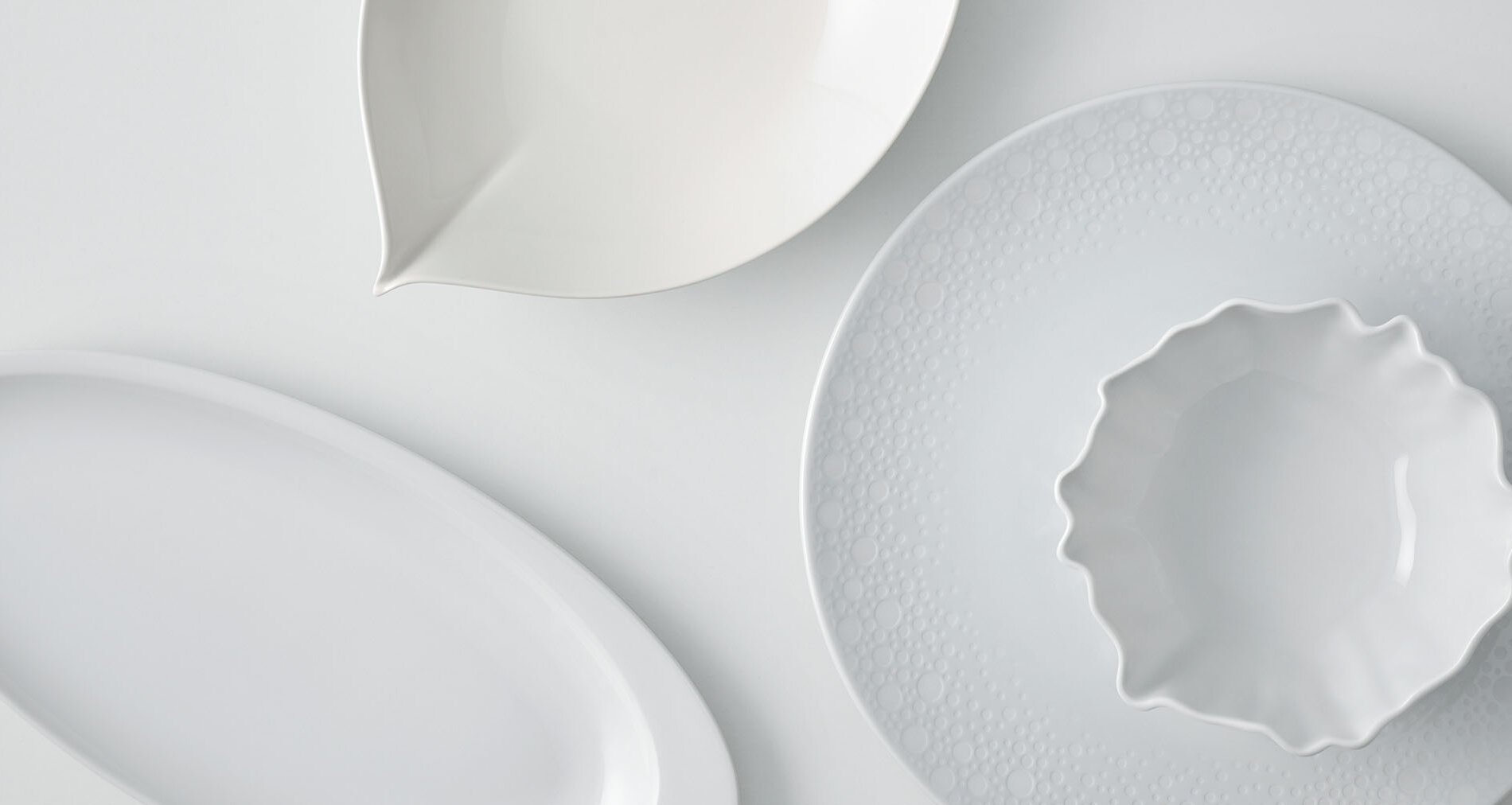
Porcelain as "White Gold"
What exactly is behind the term "white gold"? After all, this term is not only used in connection with porcelain. Marble, salt and sugar, as well as other substances, also belong to this category. In old-world culture, gold was associated with something valuable, even divine. Therefore, it developed into a synonym for valuable objects. Accordingly, people at that time called their white fabrics, which were considered rare and therefore precious, "white gold".

What properties make porcelain white gold?
Professional quality Made in Germany
Our hard porcelain, one of the hardest materials in the world, is characterized by a very high edge impact resistance and an extremely high scratch resistance of the glaze. Using the best raw materials and a sophisticated composition of kaolin, quartz and feldspar, fired at over 1,400°C, we produce a porcelain with premium quality that has proven itself in use in the catering industry for over 135 years.
- Dishwasher safe
- Microwave safe
- Ovenproof
- Acid resistant

An insight into the history of porcelain
Porcelain is already known since the heyday of Western Chinese cultures around 1122 to 770 BC. It was not invented directly, but came into being through a long process of development. It was not until the 13th century that porcelain made its way from China to the European region through merchants, explorers and world travelers. But arriving in Europe for a long time did not mean that the Chinese betrayed their manufacturing process - the production of porcelain had to be reinvented here.
At the beginning of the 18th century, the German alchemist and pharmacist's assistant Johann Friedrich Böttger and his team began researching the manufacturing secret. To this day, the invention of porcelain is associated with him. Around 1708, the team under Böttger's leadership succeeded in producing white hard porcelain for the first time. Then, in 1710, the first European porcelain manufactory was founded in Germany and many more followed.
Porcelain tableware is hygienically safe
Maintaining hygiene standards has always played an essential role in the hotel, restaurant and communal catering industries, but in Covid times the issue did come more to the fore. Due to the manufacturing process and chemical composition, hard porcelain has a virtually abrasion- and scratch-resistant, completely sealed hygienic surface.
The high firing temperature of hard porcelain at over 1,400° C also results in an exceptionally hard glaze whose resistance to abrasion is superior to other materials such as Vitreous China, Bone China or even stoneware. The durable, very smooth and non-sticky glaze surface ensures that hard porcelain tableware is easy to clean and thus has excellent hygienic properties. Also, unlike open-pored material surfaces such as stoneware or earthenware, porcelain with its low porosity offers the possibility of immediately removing any deposits of germs and bacteria. Unlike porous materials, these cannot "hide" in the pores. Porcelain also has low thermal conductivity due to its density and mineralogical structure.
Neither tempered glassware nor metal can store pre-tempered heat as long as porcelain. The formation of heat-sensitive viruses, which would survive longer at lower temperatures, is slowed down. It is no coincidence that hard porcelain has always been used predominantly in the catering industry. It's not just the robustness and durability of the material that makes it the perfect companion in the professional kitchen.
Is Noble China a version of bone china?
There are two types of porcelain: Hard porcelain and soft porcelain. Noble China is an innovative porcelain mass from BHS tabletop whose raw materials are based on the usual components of hard porcelain. In comparison, Bone China and Vitreous China* belong to the soft porcelain category. This results in some differences that can be decisive, especially in the catering and hotel industry.


The material bone china compared to noble china
The kaolin content determines whether a porcelain mass belongs to the hard porcelain or soft porcelain category. It is called hard porcelain if the content of kaolin is 50 %. Noble China as hard porcelain consists of the raw materials 50 % kaolin, 25 % quartz and 25 % feldspar. The other "ingredients" belong to the arcanum*. Noble China tableware is also called vegan porcelain for this reason, because it does not contain any animal components like its bone china counterpart. It is also cadmium and lead-free. In contrast, bone china material, also known as bone china, contains 50 - 60 % bone ash, as well as 15 - 30 % quartz, feldspar and kaolin.
Differences in appearance and color
When comparing Noble China hard porcelain with Bone China soft porcelain, there is not much difference in color at first glance. The natural white color of Noble China is called BoneWhite. Bone China is somewhat thinner or finer and more transparent; in technical jargon it is also called "transulence*". With regard to tableware with decoration, it can be said that bone china offers a wider range of colors due to the lower firing temperature of the glaze firing. However, the decorations are not as durable as Noble China.
The firing - decisive for the glaze hardness
In the firing, Bone China material differs significantly from Noble China, which is crucial for its use. The lower proportion of kaolin in bone china results in a lower smooth firing temperature of the soft porcelain. Soft porcelain is densely fired from 1.240 - 1.280°C during the first firing, with the glaze fired at only 920 - 1.125°C. Hard porcelain is indeed at a temperature of 900 - 950°C during the first firing. However, Noble China's glaze does not melt until 1.350 - 1.450°C, which allows for exceptionally high edge impact resistance, as well as glaze hardness, and is a decisive advantage depending on the application. Noble China's resistant glaze is thus particularly scratch-resistant and hard-wearing.
Conclusion:
In summary, Noble China is very resistant, durable and hygienic due to its high firing temperature of over 1.400°C. All three are important factors in the catering and hotel industry. In terms of Mohs hardness, Noble China is at 8, Bone China at 7 and steel in the sense of cutlery at 6. For customers who attach great importance to transparency and color intensity, Bone China is the first choice. Noble China scores as a total package of appearance, material and amortization.
*We clarify!
What exactly is Vitreous China?
Vitreous China belongs to the ceramic category of fine stoneware and, in terms of material, lies between stoneware and porcelain. The raw materials are composed of 40 - 50 % clay and kaolin, 20 - 30 % quartz and 20 - 30 % feldspar, which after firing at 1.300°C appear light to white. Vitreous China articles are non-transparent and are used for tableware, as well as sanitary ware.
What does Arcanum mean?
In the 18th century, "arcanum" was used to describe the knowledge of the secret of porcelain making. The arcanist is the inventor or connoisseur of these secret recipes. The arcanum included the knowledge about the preparation of the mass, the firing process, the glaze and the color.
What does transparent porcelain mean?
Transparency is considered to be the hallmark of porcelain. It should actually be called transulence, i.e. translucency, because transparency in the literal sense means transparency. In ceramic usage, however, the word transparency has become accepted.
Price per piece, plus VAT; Prices may vary for requests for deliveries abroad
